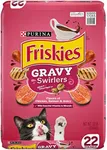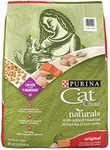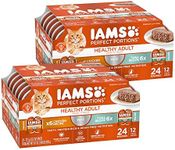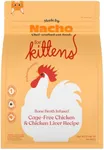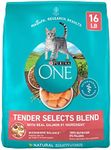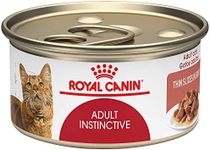Buying Guide for the Best Food For Outdoor Cats
Choosing the right food for outdoor cats is crucial for their health and well-being. Outdoor cats have different nutritional needs compared to indoor cats due to their higher activity levels and exposure to various environmental factors. When selecting food for outdoor cats, it's important to consider several key specifications to ensure they receive the proper nutrients to stay healthy and active.Nutritional ContentNutritional content refers to the balance of proteins, fats, carbohydrates, vitamins, and minerals in the cat food. This is important because outdoor cats require a higher protein and fat content to support their active lifestyle and maintain their energy levels. Look for foods with high-quality animal proteins as the first ingredient and ensure it meets the AAFCO (Association of American Feed Control Officials) standards for a complete and balanced diet. If your cat is very active, opt for food with higher protein and fat content. For less active outdoor cats, a balanced diet with moderate protein and fat levels is sufficient.
Caloric DensityCaloric density refers to the number of calories in a given amount of food. This is important because outdoor cats burn more calories due to their active lifestyle and need more energy to stay healthy. Foods with higher caloric density provide more energy in smaller portions, which is beneficial for outdoor cats who may not eat as frequently. For highly active outdoor cats, choose food with higher caloric density to ensure they get enough energy. For moderately active cats, a food with moderate caloric density will suffice.
Moisture ContentMoisture content refers to the amount of water present in the cat food. This is important because outdoor cats may not have consistent access to fresh water, and higher moisture content in their food can help keep them hydrated. Wet cat food typically has higher moisture content compared to dry food. If your outdoor cat has limited access to water, consider feeding them wet food or a combination of wet and dry food to ensure they stay hydrated. If your cat has regular access to water, dry food with lower moisture content can be an option.
Ingredient QualityIngredient quality refers to the source and type of ingredients used in the cat food. This is important because high-quality ingredients provide better nutrition and are easier for cats to digest. Look for foods with named animal proteins (like chicken, beef, or fish) as the first ingredient and avoid foods with fillers like corn, wheat, or soy. For outdoor cats, high-quality ingredients are essential to support their immune system and overall health. Choose foods with natural ingredients and avoid artificial preservatives, colors, and flavors.
Special Dietary NeedsSpecial dietary needs refer to any specific health requirements your cat may have, such as allergies, sensitivities, or medical conditions. This is important because addressing these needs can prevent health issues and improve your cat's quality of life. If your outdoor cat has allergies or sensitivities, look for hypoallergenic or limited ingredient diets. For cats with medical conditions, consult your veterinarian for a prescription diet that meets their specific needs. Always tailor the food choice to your cat's individual health requirements.



